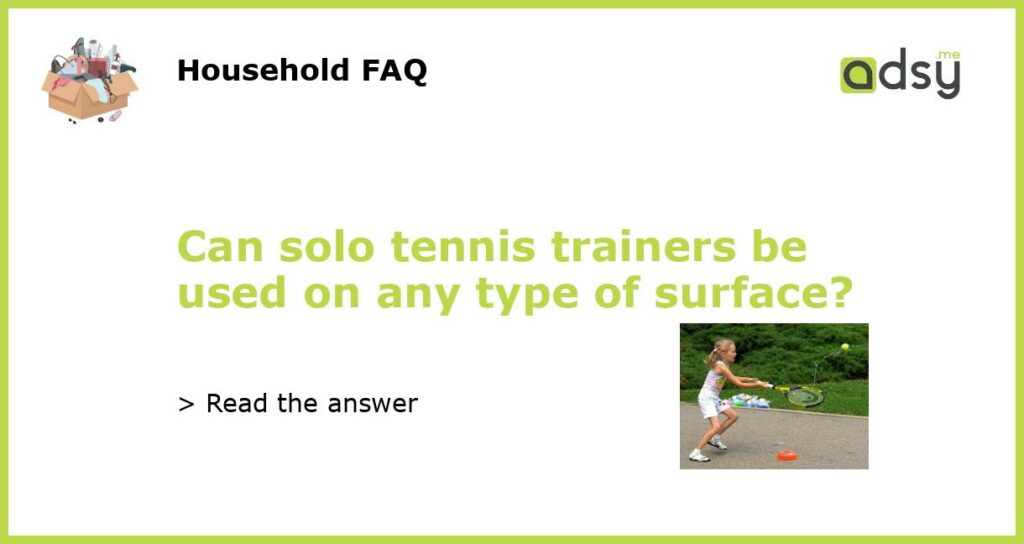Understanding Solo Tennis Trainers and Their Versatility on Different Surfaces
Solo tennis trainers are popular training tools for tennis players looking to improve their skills outside of traditional tennis court settings. They are portable and do not require a partner, making them convenient for players who want to practice on their own. One common question among tennis enthusiasts is whether solo tennis trainers can be used on any type of surface. In this article, we will explore the versatility of solo tennis trainers and their suitability on different surfaces.
What are Solo Tennis Trainers?
Solo tennis trainers are devices designed to simulate the experience of practicing with a partner, even when playing alone. They typically consist of a base, a ball on an elastic cord, and sometimes a net or target. They are commonly used for practicing volleys, groundstrokes, serves, and other tennis shots without the need for a partner.
The Versatility of Solo Tennis Trainers
Solo tennis trainers are designed to be versatile and adaptable to different playing conditions. While they are most commonly used on tennis courts, they can also be used on a variety of other surfaces. The versatility of solo tennis trainers lies in their ability to provide a consistent and controlled rebound of the ball, regardless of the surface on which they are used.
Using Solo Tennis Trainers on Different Surfaces
Solo tennis trainers can be used on a range of surfaces, including hard courts, grass, clay courts, and even indoor surfaces. On hard courts, which are the most common surface found in tennis facilities, solo tennis trainers offer a realistic bounce that closely resembles the rebound of a ball off a hard court. This allows players to practice their shots with accuracy and precision.
On grass courts, where the ball tends to have a lower bounce, solo tennis trainers can be adjusted to provide a similar experience. By adjusting the tension of the elastic cord, players can simulate the lower bounce commonly experienced on grass surfaces. This allows players to adapt their shots and develop their grass court skills.
Similarly, on clay courts, where the ball tends to have a higher bounce, solo tennis trainers can be adjusted to replicate the rebound of a ball on clay. By adjusting the tension of the elastic cord, players can simulate the higher bounce commonly experienced on clay surfaces. This helps players adapt their shots and develop their clay court strategies.
Solo tennis trainers are versatile tools that can be used on various surfaces to improve tennis skills. Whether playing on hard courts, grass, clay, or other surfaces, solo tennis trainers can provide a consistent and controlled rebound of the ball. By adjusting the tension of the elastic cord, players can simulate the specific playing conditions of different surfaces, allowing them to practice and refine their skills accordingly. So, whether you prefer playing on a traditional tennis court or want to practice on a different surface, a solo tennis trainer can be a valuable training tool to enhance your game.






